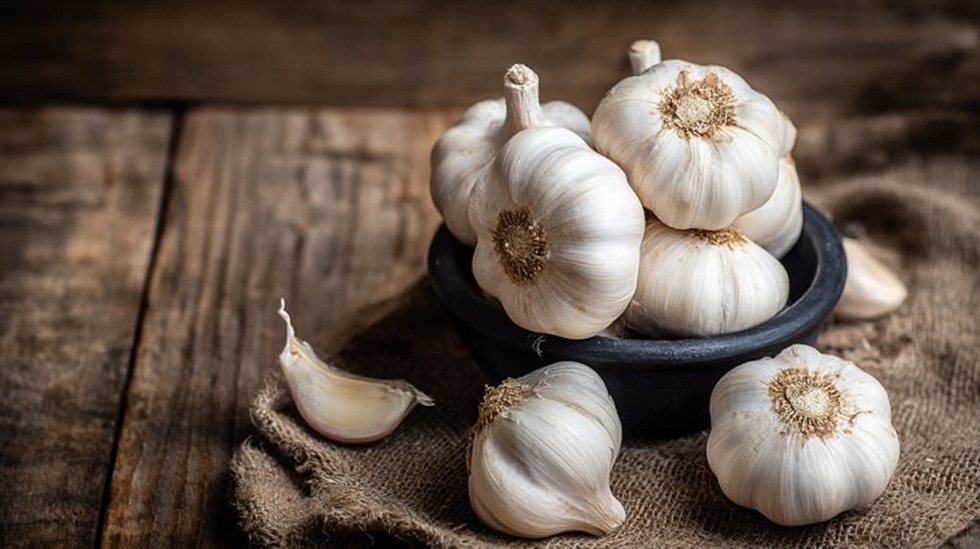Garlic – the fragrant health bomb you can’t help but love
Garlic (Latin: Allium sativum) has been one of the most popular ingredients in Hungarian and European cuisine for centuries. You may also know it as “tooth onion” or simply “onion”, but we like to call it garlic. 🌱

This aromatic plant originated in Central Asia and has been part of the human diet for over 5,000 years. It was also consumed by ancient Egyptian pyramid builders to endure hard work. Since then, it has spread to almost all parts of the world and has become one of the most popular natural flavourings in cuisine.
How important is it in the kitchen?
5 out of 5 – Of utmost importance!
There are few kitchens in Europe where it is not almost a mandatory ingredient. Without garlic, Hungarian stews, Mediterranean pasta, cream soups and even homemade butter cream would be poor without it. It’s the spice that not only adds flavour but also character to food.
Which part of the plant is edible?
We eat the lower, underground part of the garlic, the bulb, which is divided into several cloves. These cloves can be used raw, cooked, steamed, fried, as a cream or in sauces. The young shoots and green leaves are also eaten, for example in Asia, but are less common in our country. The inflorescences and stems are not usually used, they are not poisonous, but they are not tasty either.
Health benefits – a small miracle in the pantry
Garlic is not only delicious, it is also a real natural medicine. The compound allicin in garlic has a powerful antibacterial and antifungal effect. Regular consumption:
- strengthens the immune system,
- helps lower blood pressure,
- has a good effect on cholesterol levels,
- can reduce inflammation in the body.
It is also an excellent source of vitamin B6, manganese and vitamin C.
Growing and season
Garlic is grown in the open field and is known in two types: autumn (planted in October, harvested in early summer) and spring (planted in early spring, harvested later). In Hungary, garlic is mainly known for its high quality in Makó and its surroundings, but it is also grown in Békés and Csongrád-Csanád counties.
In Europe, Spain is the largest producer, especially the Castilla-La Mancha region. You can find garlic in shops all year round, but the domestic, fresh Hungarian harvest is usually on the shelves between June and September. During the rest of the year, it is mostly imported, mainly from Spain or China.
How to choose good garlic?
When shopping, look out for these:
- The heads should be hard, compact, not soft or spongy.
- The skin should be dry, clean, white or slightly purple.
- Avoid pieces with green shoots – these have already started to sprout and may taste bitter.
Storage – to stay with you for a long time
Garlic should be kept in a cool, dry, well-ventilated place. Don’t put it in the fridge as it will soften and sprout more quickly. It’s best to store it in a wicker basket or clay pot where it can ventilate well.
Garlic around the world
Garlic is one of the most universal ingredients, present in almost every kitchen:
- Italy: used in pasta sauces, bruschetta, pesto.
- France: unthinkable without aioli sauce and various pâtés.
- China: stir-fried with soy sauce and ginger is the soul of the dish.
- India: an essential ingredient in curries, sauces, spice bases.
An iconic recipe – Garlic cream soup
Ingredients:
- 1 head of garlic (about 10 cloves)
- 1 medium onion
- 1 tablespoon butter
- 1 tablespoon of flour
- 1 litre of stock
- 1 dl cream
- fresh parsley, salt, pepper to taste
Preparation: sauté the chopped onion and garlic in butter, sprinkle with flour and add the stock. Cook until soft, blend, add the cream, salt and pepper and sprinkle with parsley. Perfect with a slice of toasted bread! 🍲
Garlic in the kitchen – tips and tricks
You can use garlic minced, crushed or whole. Crushed garlic has a stronger flavour, while roasted whole garlic is sweeter and softer. Important tip: do not over-fry! If it browns, it will be bitter.
It suits him well:
- olive oil,
- parsley,
- rosemary,
- basil,
- chilli.
What you should avoid: cinnamon, vanilla, cardamom – these rarely pair well together.
Remember: if you want something really tasty, don’t spare the garlic! 😉
